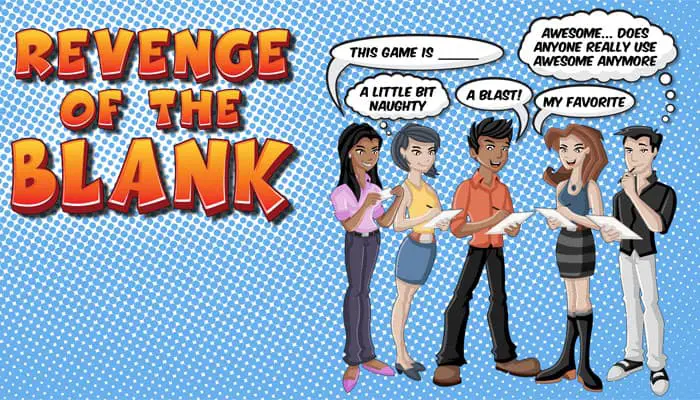

Components
- 8 Whiteboards
- 8 Dry Erase Markers
- 8 Score Pile Cards
- 100 Prompt Cards
- Instructions
Setup
Give each player a whiteboard, dry erase marker, and a cloth or napkin (to erase the board).
Decide how long of a game you want to play and use the chart on the right to deal out the appropriate number of cards to everyone.

If you have fewer than 8 players remove the extra Score Pile cards making sure not to remove the one with "First Judge" on it
Shuffle & deal out a Score Pile card to each player. The player who gets the "First Judge" card is the first Judge & starts the game.
Game Play
The Judge selects one of the cards they were dealt during the set-up phase and reads one of the three prompts on the card aloud.

Everyone but the Judge writes a response on their whiteboard and places it in the center of the table.
Note: If multiple people write the same response, the person to place it in the center of the table first gets to keep theirs. Everyone else with the same response must write a new one.
When all responses are in, the Judge picks the answer that they like the best and gives the card they read from to the winning player. The winning player puts this card under their Score Pile card.
Note: You MAY make arguments for the responses that were submitted to try and influence the judge's decision.

The next round begins with the player to the left of the Judge becoming the new Judge.
When all the cards have been awarded, players count up the cards under their Score Pile card. The player with the most cards wins.
If there's a tie, the winners can share the victory or compete in a tie-breaker round.
Tie-breaker

The first player to the left of the "First Judge" who is not a part of the tie draws a new card & selects a prompt to read aloud.
The tied players write their responses & place the whiteboards in the center of the table.
All remaining players not involved in the tie, vote for the best answer. If the vote is tied, the person who read the prompt breaks the tie.
Suggestion
The prompts use generic terms like "partner" so that they can work for anyone. We recommend that you replace these terms with words that fit your specific situation when you read them aloud.
Example: If the prompt was "My partner asked me to stop ________ ".
you might instead say "My girlfriend asked me to stop ________ ".

Questions

-
What if two responses are similar, but not the same?
The Judge determines whether or not the responses are too similar. If the Judge decides that they are too similar, the player who submit- ted their response last would have to submit a new response.
For example: The Judge may determine that "mad" and "angry" are too similar and make the person who submitted their response last write a new response.
-
If i am the judge can i give other players hints or ideas?
No, while you are the Judge you should not try and influence the responses of the other players. You may talk about it after all the responses are submitted.
-
Can I take back my answer and submit a new one?
As long as there are still people writing their response, you can rewrite yours. Once everyone has placed their whiteboard on the table, the responses are locked in and cannot be changed.
-
If I'm the judge & don't like any of the answers, do i have to pick one?
Yes, you must pick the best response from those that were submitted.
-
Are the amount of cards under a player's score pile hidden or public knowledge during the game?
Players should keep their score hidden during the game.
-
Do I Have To Write An Answer?
No. If you can't think of anything and wish to pass you may.
Continue Reading